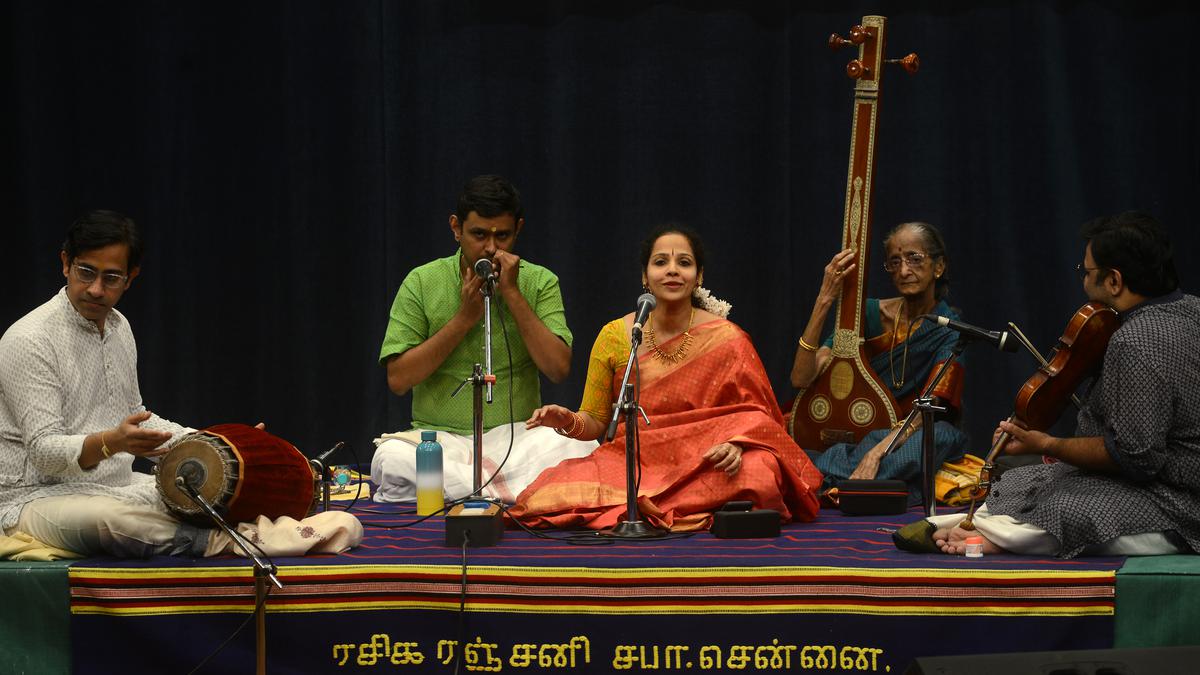
K. Gayatri’s concert was steeped in bhakti
The Hindu
K. Gayathri’s concert rode high on bakthi rasa
K. Gayatri’s concert was an evening of leisurely pace — portraying the mellowness of ragas Varali and Bhairavi. She particularly needs to be applauded for her gentle handling of Kamboji, ensuring the raga’s beauty remained intact. She chose Papavinasa Mudaliar’s composition as a ninda stuti, ‘Natamadi thirindha’, where the devotee poses poignant questions to Nataraja. The performance maintained the composition’s sanctity, especially when she chose to present only the niraval from a part of the anupallavi line ‘Ananda sadai viritthadinava’ without adding kalpanaswara. The concert ascended with a seven-minute Varali alapana skillfully navigating the raga’s contours.
B. Ananthakishnan, during his part on the violin, added vibrant hues to the raga, embellishing it with occasional jarus that elevated the emotive essence. The rendition of ‘Mamava meenakshi’ (Muthuswami Dikshitar) reached sublime heights during the niraval at ‘Shyame sankari,’ unveiling Varali’s elegance. However, the later part of the swarakalpana, while technically proficient, momentarily moved away from the established mood. Vijay Natesan’s rhythmic support on the mridangam admirably held the kriti set in Misra Chapu.
Another composition was a homage to Suguna Purushothaman (Gayatri’s guru), whose ‘Govindan venu gopalan’ in Bhairavi was presented with impressive laya interludes. Gayatri’s performance that evening had immense variety — from the Dakshinamurthy stotram to the timeless ‘Margazhi thingal’ Tiruppavai verse in Nattai. There was also Tyagaraja’s Abhogi kriti, ‘Nannu brova neekintha thamasama’, which came with short but brisk kalpanaswaras intricately woven around the pallavi line ‘Nannu brova’.
The concert reached a crescendo with Kedaragowla, beautifully unfolded in ‘Tulasi bilva’ (Tyagaraja, Adi) evoking profound emotions akin to performing an archanai with sacred leaves and flowers. The percussion interludes delicately infused moments of silence and tranquility, enhancing the bhava of the kriti. The niraval at ‘Karunatho nenarutho’ depicted Tyagaraja’s plea to Rama, and the ensuing melkala swaras indicated Gayatri’s virtuosity. The synergy between Vijay Natesan (mridangam) and Sai Subramanian on the morsing during the tani was indicative of their artistry. Purandaradasa’s ‘Devaki Nandana’ in Ragamalika with Maund, Khamas, and Desh ragas, prefaced by a sloka from Sri Krishnashtakam, brightened up the post-tani segment.
Gayatri, who prefers to present rare talas, chose to conclude the concert with the tillana ‘Gowri nayaka’ in Kanada set in Simhanandana tala with 128 aksharams composed by Maha Vaidyanatha Sivan.











